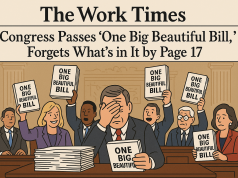[ad_1]
There has been much written about positive reinforcement as a psychology for changing performance. It is a technique both used in animal training and child development, which now has proven as effective for use as part of human resource management in business tool. As a business manager, how can one apply and monitor positive reinforcement?
First understand that everyone enjoys being recognized when they do good work. Only pointing out when someone does something wrong and never acknowledging what is done correctly can lead to negative results. Employees who are given praise for doing things right or for progress in performance improvement will work harder to do an even better job. Employees who are not told when they do good work and are corrected or ridiculed when they do bad work, will only do the work that is required to stay out of trouble in the future. These employees can enjoy their work, improve their attitude, or see a reason to work harder because only bad performance is acknowledged.
With this understanding of human behavior, managers must begin to modify the approach to employee recognition. Managers must notice when an employee does something right and give them simple and sincere praise for what they did. Tell the employee the specific thing they did right and how that helps the department or company. Let the employee know that management has confidence in their ability to continue to perform well and be innovative in their approach to their own tasks. This positive reinforcement of the employee’s effort should occur as soon as possible after the job well done is noticed. Frequent, sincere, and positive praise can go a long way to getting employees to perform at their best.
Giving positive reinforcement does not mean that what is done incorrectly by an employee is to be ignored. Instead, it means to recognize what portion of the work was done correctly first, then follow-up with what can be done better the next time and why the performance or work result was not quite what was expected. If this means the manager must take some of the blame for not giving detailed instructions for the desired behavior or result, they should do so in an apologetic manner and then proceed to explain how the manager personally will try to do better. This is an excellent time for the manager to let the employee know they still have faith in them but need their help and cooperation by their asking questions if the manager’s instructions are not clear. This allows both the employee and manager to get better at communication, which results in improved task completion. Remember mangers need to give positive results first, then follow-up with what improvements are needed, apologize if necessary, and then reinforce what was done right again. When working the improvement or follow-up statement do not use the word “but” as this word often negates anything said before it and the employee may stop listening as they know a negative is coming next.
Understanding that everyone enjoys being acknowledged when they do good work is a typical human response should help improve performance. Business managers need to learn how and when to apply positive reinforcement when monitoring improvements to work behavior or task completion. Managers should always consider the positives rather than only mentioning when employees may be performing beneath the desired level. Positive reinforcement could be the key to better results in human resource management, which should lead to better business results as well.
[ad_2]
Source by Shirley Lee




























